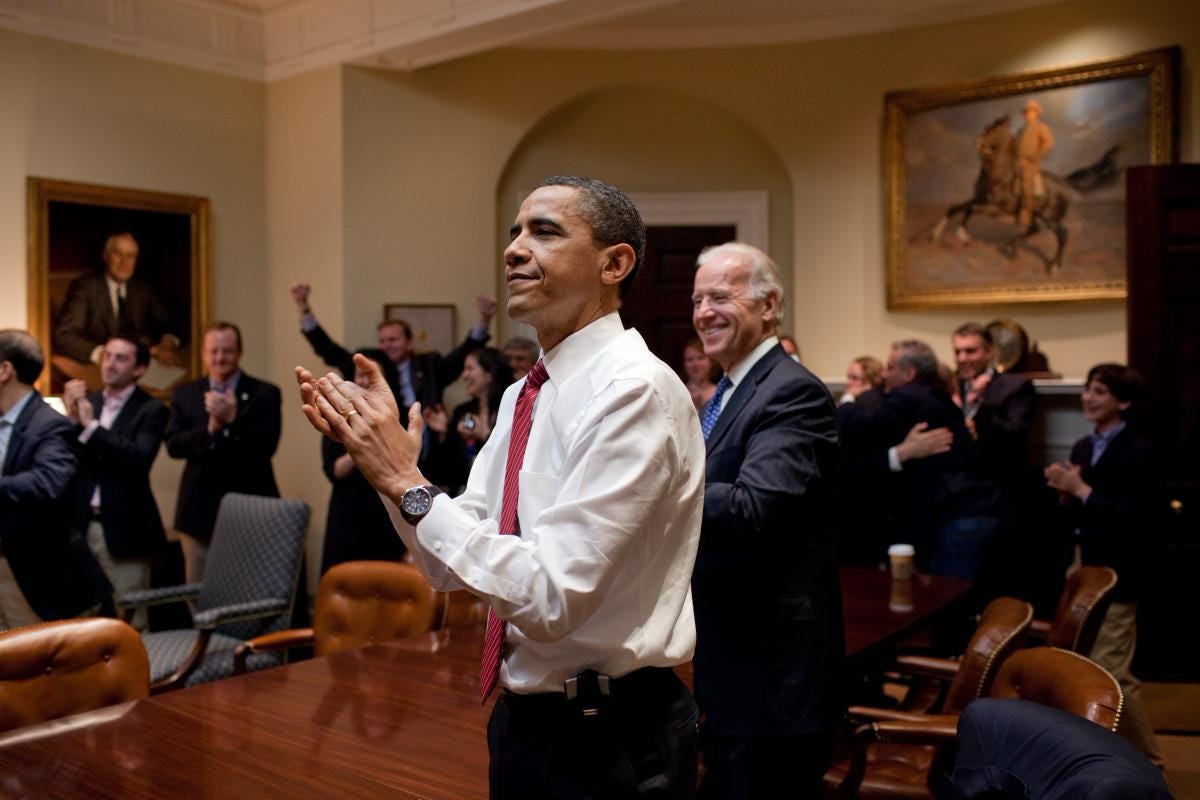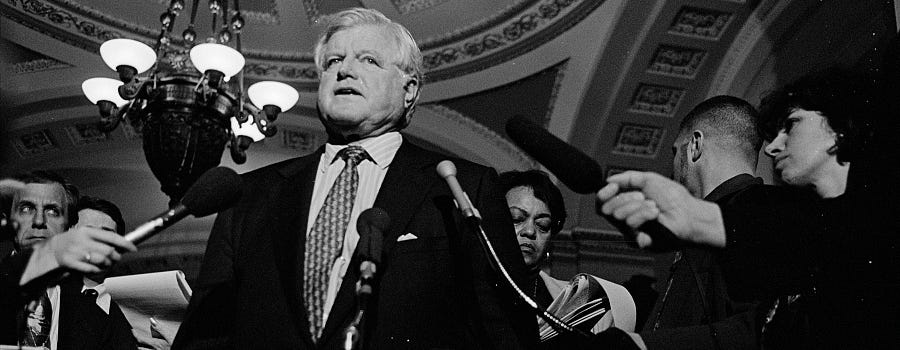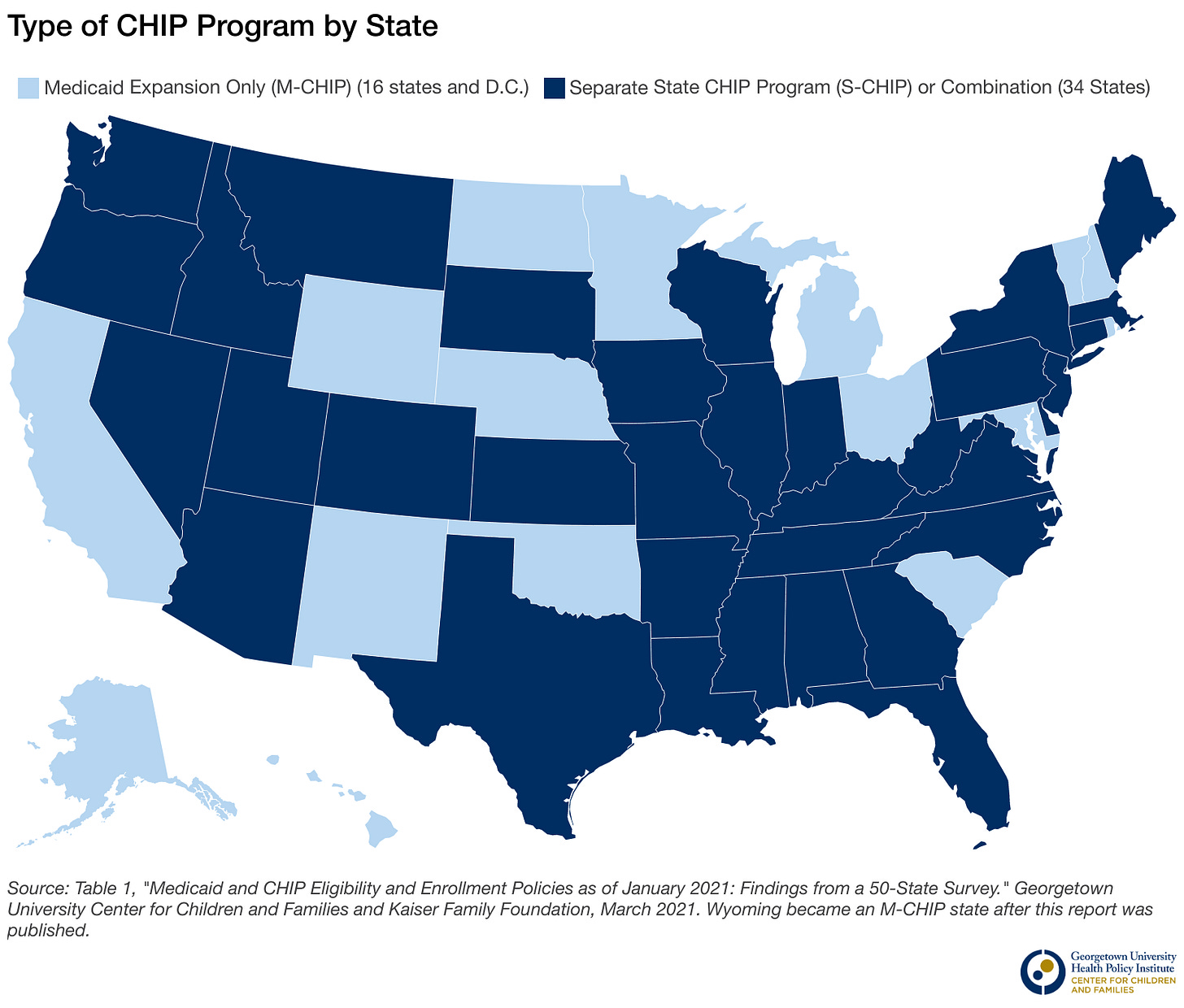Story of Medicare & Medicaid: Now, let's talk about the kids
Built for the In-Between: How CHIP Became the Goldilocks of Health Policy
Hey all, … it’s been awhile.
As a pediatric endocrinology fellow, there are months where your life is just dedicated to the job.
That’s what happened in March… and April.
And God it was miserable.
As I slowly come out of my endocrinology hole, I am excited to spend more time writing.
But as I was sitting on the sidelines watching the world fall apart
I was devastated and overwhelmed.
I long for the times where, we do not hear from Washington everyday.
I long for the peace we had as Americans, that seems to be hidden since January 20th, 2025
And through all of this,
the medical world has treated this as business as usual,
leaving me to scratch my head wondering why?
That was until March 30, 2025 7:00 pm EST.
When 68-year-old Cory Booker decided the world needed to stop.
We needed to stop treating this moment as business as usual
We needed to stop acting as though people were not getting harm
That norms were not being changed
And that our freedoms were not being placed at risk.
Though, the moment was brief, the impact was long.
Bringing needed attention to government programs such as Medicaid and Medicare with new tune, but it is still under threat.
For me, it was enough to remember why I needed to finish this story about why Medicaid and Medicare are important and foundational to American health care system.
Just to recap, we discussed the following:
🔹 The Story of Medicare & Medicaid – The President Who Changed History
🔹 The Story of Medicare & Medicaid – The Lone Black Doctor Who Demanded Change
🔹 The Story of Medicare & Medicaid – How Black Health Changed for the Better
We will end the journey around, The Story of Medicare & Medicaid – How We Have Shortchanged the Fight for Health Equity. I am excited to be able to finish this series with a bang and cliffhanger as we need to continually think about how we can not only keep these programs but also reform and improve them.
To end this long prologue, I am excited to switch gears and talk about how children’s health insurance (CHIP) came to be.
The Birth of the Children’s Health Insurance Plan (CHIP)
If you’ve been following health care headlines like I have, chances are you’re sick of hearing the name Kennedy.
And no, it’s not because of the measles making a comeback.
It’s because one Kennedy in particular has taken “wellness” and warped it into a weapon against public health.
But not all Kennedys have carried that torch.
In fact, if RFK Jr.’s uncle, the great Sen Ted Kennedy knew what was happening in his name, he’d be doing somersaults in his grave.
And not the kind you clap for.
While most people remember Ted Kennedy for his role in passing the Patient Protection and Affordable Care Act, known widely as Obamacare.

His legacy in children’s health care, like children’s health itself, is overlooked.
Before the ACA, before the headlines, there was CHIP.
The Children’s Health Insurance Program.
And Ted Kennedy helped build it.
The Children’s Health Insurance Program

Signed into law on August 5, 1997, when bipartisanship was still a thing, CHIP was the product of an unexpected alliance between Senator Ted Kennedy (D-MA) and Senator Orrin Hatch (R-UT)—a true “for the kids” moment.
Together, they co-sponsored the State Children's Health Insurance Program (SCHIP), established under Title XXI of the Social Security Act.
It was inspired by a state-level initiative in Massachusetts, and it followed the Goldilocks principle of health policy:
Not too much.
Not too little.
Just right.
CHIP was designed to cover children in families that earned too much to qualify for Medicaid but not enough to afford private insurance—the kids who fell right through the cracks.
Kid-Centered Health Policy, By Design
Think of CHIP as the kid-friendly cousin of Medicaid—a federal-state partnership with enough flexibility for each state to shape it in their own way. States could:
Expand their Medicaid programs
Build a separate CHIP program
Or do a hybrid of both
Both the federal government and the states chipped in (pun fully intended), with the feds matching state funds and throwing in a little bonus.
But here’s the catch—unlike Medicaid, CHIP funding is capped.
That means both the money and the number of children who can be covered are limited. And every time reauthorization rolls around, CHIP becomes a pawn in budget politics.

CHIP Under Fire (and Still Standing)
Let’s talk receipts.
📈 2009: The Children's Health Insurance Program Reauthorization Act (CHIPRA) expanded coverage to an additional 4 million children and pregnant women.
📈 2018: The Bipartisan Budget Act extended CHIP’s authorization through 2027.
Even as it gets tossed back and forth by both parties, CHIP’s success is undeniable.
The Numbers Don’t Lie
Since CHIP’s inception in 1997:
✔️ Uninsured rates for children have dropped from 14.2% into the single digits
✔️ As of May 2025:
→ Over 7 million children are enrolled in CHIP
→ Over 37 million children are enrolled in Medicaid
From routine checkups and immunizations to emergency care and hospital stays, CHIP has transformed the way children receive healthcare in the U.S.
This is anti-poverty healthcare at its finest.
It’s not perfect. It’s not fully protected. But it’s working.
The System Keeps Changing—But Who’s Still Being Left Behind?
CHIP didn’t come out of nowhere.
It was built on the foundation Medicare and Medicaid laid—programs born from struggle, protest, and policy courage.
We’ve looked at how these programs forced hospital integration, lowered infant mortality, and brought health care to Black and low-income communities once completely locked out of the system.
But access is only part of the story.
Because as CHIP and Medicaid expanded coverage, another reality came into view:
🩺 Coverage doesn’t always mean care.
📉 The gaps didn’t vanish—they evolved.
🧬 And the roots of racial health disparities run deeper than eligibility and enrollment.
So in the next dose, we’ll ask harder questions:
🔍 Who still gets the short end of the stick when it comes to quality care?
📊 How do these programs reinforce—or resist—structural inequities in the healthcare system?
📜 And what role did the Affordable Care Act really play in closing the gap… or leaving it wide open?
Because a changing system means nothing if it still fails the communities it was supposed to protect.
💊 See you in the next dose.
And if you haven’t already, now’s the time—subscribe to The Advocacy Dose so you don’t miss a single truth bomb.





